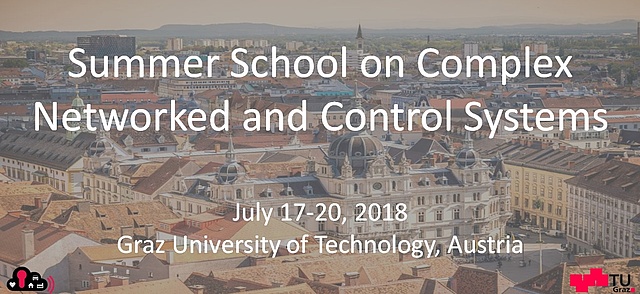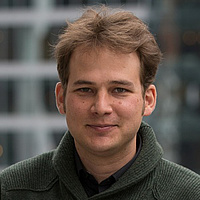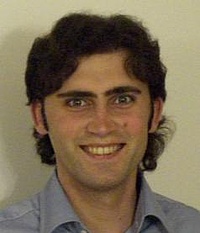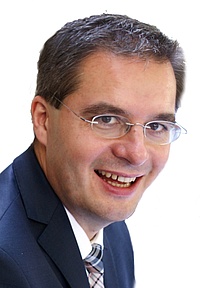
Invited Lecturers
Thomas Watteyne (Inria Paris), "Getting Your Hands Dirty with the Industrial IoT and SmartMesh IP".
Bio: Thomas Watteyne is an insatiable enthusiast of low-power wireless mesh technologies. He holds and advanced research position at Inria in Paris, in the EVA research team, where he designs, models and builds networking solutions based on a variety of Internet-of-Things (IoT) standards. He is Senior Networking Design Engineer at Analog Devices, in the Dust Networks product group, the undisputed leader in supplying low power wireless mesh networks for demanding industrial process automation applications. Since 2013, he co-chairs the IETF 6TiSCH working group, which standardizes how to use IEEE802.15.4e TSCH in IPv6-enabled mesh networks, and is member of the IETF Internet-of-Things Directorate. Prior to that, Thomas was a postdoctoral research lead in Prof. Kristofer Pister’s team at the University of California, Berkeley. He founded and co-leads Berkeley’s OpenWSN project, an open-source initiative to promote the use of fully standards-based protocol stacks for the IoT. Between 2005 and 2008, he was a research engineer at France Telecom, Orange Labs. He holds a PhD in Computer Science (2008), an MSc in Networking (2005) and an MEng in Telecommunications (2005) from INSA Lyon, France. He is Senior member of IEEE. He is fluent in 4 languages.
Lecture outline: No, the Industrial IoT is not the next revolution. It's a revolution that happens today. With standards such as 6TiSCH, IEEE802.15.4 TSCH and WirelessHART, the IoT has been going industrial for a number of years. Tens of thousands of such networks have been deployed in application domains are varied as Smart Factory, Smart Building, Smart Home and Environmental. Off-the-shelve products such as Dust Networks/Analog Devices' SmartMesh IP offer >99.999% end-to-end reliability and over a decade of battery lifetime. Vibrant open-source projects such as OpenWSN are at the forefront of innovation in this domain.
The goal of this lecture is to both serve as reality check about the IIoT, and go get our hands dirty. We will first go through an overview of the key technology of the IIoT, and talk about what standards and products are available today. We will show numerous examples of where they are being used, all drawn from years of experience in real-world deployments. The second half of the lecture will be completely hands-on, and will use SmartMesh IP, the leading low-power wireless solution on the market today, which offers >99.999% end-to-end reliability and over a decade of battery lifetime. We will deploy a SmartMesh IP network throughout the building, and create Smart Building applications, combining SmartMesh IP and IBM Cloud.
Ruggero Carli (University of Padova), "Distributed Convex Optimization Algorithms over asynchronous and lossy networks".

Bio: Ruggero Carli received the Laurea Degree in Computer Engineering and the Ph.D. degree in Information Engineering from the University of Padova, Padova, Italy, in 2004 and 2007, respectively. From 2008 through 2010, he was a Post-doctoral Fellow with the Department of Mechanical Engineering, University of California at Santa Barbara. He is currently an Associate Professor with the Department of Information Engineering, University of Padova. His research interests include the design of distributed optimization, estimation and control algorithms for large-scale systems (in particular robotic systems and power networks). On these topics he has been involved in several national and international projects. He has published about 30 Journal papers and 70 Conference papers.
Lecture outline: Recently, we have been witnessing a surge of interest in distributed optimization, and in particular in distributed convex optimization. The reason is twofold: the first is due to the advent of Big-Data analytics, whose problems can be often cast as large-scale convex optimization problems via MachineLearning tools. As so, parallelization of computation is ought in order to obtain rapid solutions. The second reason is the advent of Internet-of-Things and Smart Cyber-physical Systems, where a large multitude of electronic devices are capable of sensing, communicating, and of autonomous decision making through cooperation. Even in this second scenario, several estimation and control problems such as localization, map-building, sensor calibration, power flow optimization can be cast as large-scale convex optimization problems. The typical problem in distributed convex optimization over networks can be described as follows. Assume we are given a graph, that is, a set of nodes (the agents of the network) and a set of edges describing the admissible communications among nodes. Assume moreover that each node stores in memory a local convex cost function; the agents need to cooperate in a distributed way to minimize the overall sum of the local functions. By distributed we mean that only communication among neighboring agents are permitted. In the first half of the lecture we wiil review the state of the art algorithms recently proposed in literature to solve problems within the described framework (gradient-based algorithms, Newton-based algorithms, Lagrangian algorithms like dual-ascent and alternating direction method of multipliers (ADMM)). In the second half we will concentrate on implementations which are asynchronous (namely, nodes do not need to be synchronized to perform their operations) and robust to unreliable communications (i.e, packet losses).
Johannes Schiffer (University of Leeds) "Dynamics and Distributed Control in Power Systems".

Bio: Johannes Schi
er is a Lecturer (Assistant Professor) in Smart Energy Systems at the School of Electronic and Electrical Engineering, University of Leeds, UK. He received his Ph.D. degree (Dr.-Ing., with distinction) in Electrical Engineering from TU Berlin, Germany, in 2015 and a Diploma degree in Engineering Cybernetics from the University of Stuttgart, Germany, in 2009. Prior to joining the University of Leeds, he has held appointments as research associate in the Control Systems Group (2011 - 2015) and at the Chair of Sustainable Electric Networks and Sources of Energy (2009 - 2011) both at TU Berlin. He has been involved in several research projects in the areas of modeling, control and analysis of future power systems with industrial partners including Boeing, Siemens, Skytron, Vattenfall and Younicos. Johannes Schi
er's main research interests are in distributed control and analysis of complex networks with application to microgrids and power systems. Current work comprises optimal cooperative control in microgrids, robustness of distributed control architectures in power systems with respect to cyber-physical phenomena and stability analysis of periodic multistable systems with application to power networks. His work on droop-controlled microgrids has received the Automatica Paper Prize Award over the years 2014 - 2016 and his current research is supported by the EU Horizon 2020 programme and an EPSRC Global Research Challenges Grant on "Creating Resilient Sustainable Microgrids".
Lecture outline: As a consequence of the ongoing e
orts to meet the world's climate goals, most power systems around the globe are undergoing unprecedented changes and facing tremendous challenges. In particular, the power generation structure is moving from bulk centralised plants interfaced to the transmission grid through synchronous generators (SGs) to a mixed generation pool consisting of conventional SG-interfaced plants and small-scale distributed generation (DG) units connected to the distribution network via power electronic inverters. This renders the current 'fi
t-and-forget' strategy of DG deployment infeasible and challenges today's power system operation paradigms. To enable the required system transformation there is a clear need for the development of advanced distributed operation and control schemes, which are supported by exible modern information and communication technologies.
In light of the above developments, the main objectives of the present lecture are:
1. To provide an understanding of standard models used in power systems;
2. To introduce state-of-the-art distributed control concepts for power systems (with a focus on consensus-based protocols) and discuss their design and performance in the context of sampled-data and networked control systems;
3. To appreciate, via hands-on simulation-based exercises using Matlab/Simulink, the (cyber-)physical interactions of power system dynamics and advanced (distributed) control concepts.
In light of the above developments, the main objectives of the present lecture are:
1. To provide an understanding of standard models used in power systems;
2. To introduce state-of-the-art distributed control concepts for power systems (with a focus on consensus-based protocols) and discuss their design and performance in the context of sampled-data and networked control systems;
3. To appreciate, via hands-on simulation-based exercises using Matlab/Simulink, the (cyber-)physical interactions of power system dynamics and advanced (distributed) control concepts.
Gerald Matz (Vienna University of Technology) "Complexity-constrained data processing with graphs".

Bio: Gerald Matz is Associate Professor and Head of the Communication Theory Group with the Institute of Telecommunications, Vienna University of Technology, Austria. He received the Dipl.-Ing. (1994) and Dr. techn. (2000) degrees in Electrical Engineering and the Habilitation degree (2004) for Communication Systems from Vienna University of Technology. From March 2004 to Feb. 2005 he was on leave as an Erwin Schrödinger Fellow with the Laboratoire des Signaux et Systèmes, Ecole Supérieure d’Electricité (France). In 2007 he was a Visiting Researcher with the Communication Theory Lab at ETH Zurich (Switzerland), and in 2011 he was a Guest Professor with Ecole Nationale Supérieure d’Electrotechnique, d’Electronique, d’Informatique et d’Hydraulique de Toulouse (France). Prof. Matz has directed or actively participated in numerous research projects funded by the Austrian Science Fund (FWF), by the Viennese Science and Technology Fund (WWTF), and by the European Union. He has published more than 200 scientific articles in international journals, conference proceedings, and edited books. He is co-editor of the book Wireless Communications over Rapidly Time-Varying Channels (New York: Academic, 2011). His research interests include statistical signal processing, information and communication theory, and data science. Prof. Matz served as as a member of the IEEE SPS Technical Committee on Signal Processing Theory and Methods and of the IEEE SPS Technical Committee on Signal Processing for Communications and Networking. He was an Associate Editor of the IEEE Transactions on Information Theory (2013–2015), of the IEEE Transactions on Signal Processing (2006–2010), of the EURASIP Journal Signal Processing (2007–2010), and of the IEEE Signal Processing Letters (2004–2008). He was Technical Chair of the Asilomar Conference on Signals, Systems, and Computers 2016, Technical Program Co-Chair of EUSIPCO 2004, Technical Area Chair for “MIMO Communications and Signal Processing” at Asilomar 2012, and Technical Area Chair for “Array Processing” at Asilomar 2015. He has been a member of the Technical Program Committee of numerous international conferences. In 2006, he received the Kardinal Innitzer Most Promising Young Investigator Award. He is an IEEE Senior Member and a member of the ÖVE.
Lecture outline: Graphs have become a powerful tool for modeling, inference, and computation in numerous fields including signal/data processing and communications. Probabilistic graphical models are a more traditional approach that augments the qualitative properties of the graph structure with quantitative characteristics brought about by statistical models. This type of approach has excelled in the context of error-correcting codes and machine learning. In more recent big data paradigms the graph topology is used to characterize general similarity relations between data items. This concept has led to the novel field of graph signal processing that aims at extending existing conventional signal processing tools (e.g., Fourier transform, filtering, and sampling) to arbitrary graph topologies. Successful application fields here include social networks, customer databases, and biological networks. In this short course, we will present recent advances in processing massive data based on graphs, with an emphasis on the design of efficient algorithms that work under stringent complexity constraints.
We will specifically focus on two themes:
1) Information-optimal Discrete Message Passing on Probabilistic Graphical Models
We begin this part with a brief introduction to probabilistic graphical models and associated message passing algorithms. Efficient digital hardware implementations of message passing require discrete (quantized) messages. To pave the way towards discrete message passing, we discuss the information bottleneck method as a relevance-preserving compression scheme and illustrate its use in devising compress-and-forward algorithms for cooperative communication systems. We then focus on information-optimal discrete message passing for regular and irregular LDPC codes, which leads to highly efficient lookup-table decoders. The theoretical discussion is complemented with a hands-on part, in which the course attendees can experiment with design flow examples for LDPC decoder architectures.
2) Graph Learning and Sampling/Interpolation of Graph Signals
The second part of the course deals with various aspects of graph signal processing (which comprises traditional signal and image processing as special cases). Following a short primer on general notions from graph signal processing, we review relevant concepts from optimization theory. We then discuss the problem of learning graph topologies from given data sets based on graph signal smoothness constraints. Afterwards, an in-depth discussion of the problem of interpolating graph signals (aka graph pinpointing, unsupervised labeling) from small sampling sets is provided. We further show practical application examples for graph learning and graph signal interpolation. Finally, a training session will be offered where attendees will have the opportunity to formulate and solve learning and interpolation problems on real-world graphs.The material in the course is is largely self-contained and suitable for anyone with a background in signal processing, machine learning, communications, control, or computer science.
